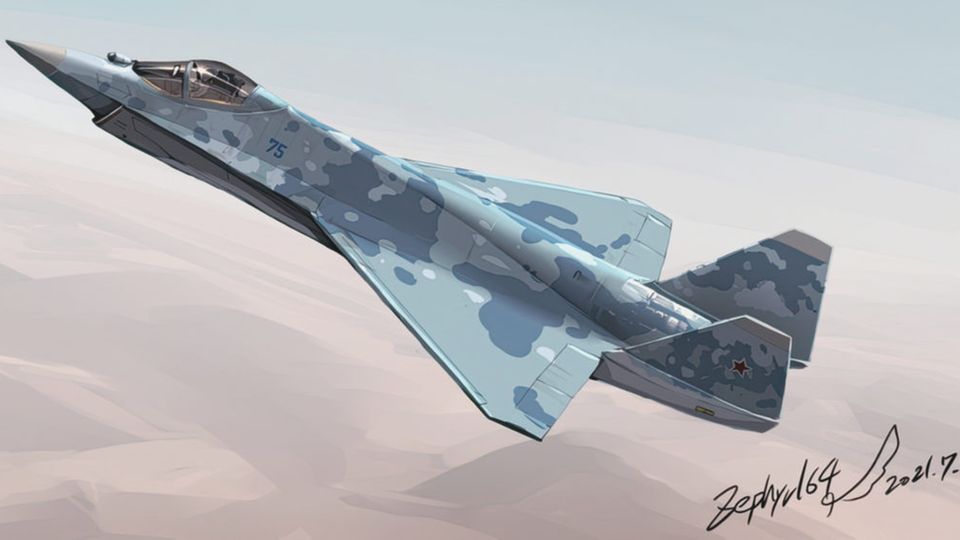War in Ukraine
R-37M Vympel – with this fighter jet killer the Russians are preparing for the arrival of the F-16
The R-37M Vympel is mounted under a Su-30SM
The long-range R-37M Vympel missile has destroyed most of the Ukrainian Air Force. It is now also being mounted on jets such as the Su-30SM. The R-37M has a much greater range than the missiles of the F-16.
The first American-made F-16 fighter jets are due to arrive in Ukraine in a few weeks. They are expected to bring about a turning point in the air war. Soviet-era MiG-29s are currently Ukraine’s best fighter jets, but they have little chance against Putin’s Air force.
But the Russians are also preparing, they are equipping their jets with long-range air-to-air missiles. A few days ago, a Su-30SM multirole fighter was spotted with long-range R-37M missiles, and two medium-range R-77-1 missiles were also mounted. The R-77-1 has a range of over 100 kilometers; it is a “fire and forget” weapon that finds its target independently.
Long range thanks to booster engine
The special feature is the range of the R-37M, which is said to be up to 400 kilometers. The NATO name is AA-13 “Axehead”. The weapon has a long range, the R-37M variant has a booster, so it can attack targets 400 kilometers away. Its speed is five to six times the speed of sound, in the lower hypersonic range. The new Agat 9B1388 seeker head independently steers the target in the final phase without the help of the carrier jet. This means that the R-37, unlike its predecessor R-33, can be used by several jets. The defensive weapon is very large. It weighs almost a ton, the length is 4.06 meters – the fragment warhead weighs almost 60 kilograms. With such a heavy warhead, the target is destroyed even if it explodes only near the jet. The attacked jet has difficulty spotting the missile. You can measure the active seeker head, then there is a warning, but it is only activated shortly before the target.
The Russians claim that they have essentially destroyed the Ukrainian Air Force with the R-37M. Until now, only Su-35S fighters and MiG-31BM interceptors were equipped with these missiles, but integration into the Su-30SM2 also prepares this jet for aerial combat with the F-16. The F-16 has missiles for aerial combat. It is equipped with the AIM-120, which has a range of 160 kilometers. With the R-37M, the Russian Air Force maintains a range advantage.
R-37M Vympel requires airspace surveillance
Air combat at these distances also poses problems. To be effective, the fighter jets used must be directed by air surveillance aircraft. It is likely that the Russians will have to use their A-50U for this. Russia has only a few operational aircraft of this type, and they will be the Ukrainians’ priority targets. Kiev, on the other hand, has no air surveillance aircraft at all. It remains to be seen whether Kiev’s jets are directed by western AWACS. The presence of the R-37M could also be seen as a threat; the missile was originally developed to attack high-quality AWACS and tanker aircraft.
Turning point thanks to the F-16?
How and whether the F-16 can bring about a change in the air war is an open question. It is more modern and more powerful than the MiG-29 of the Ukrainian armed forces, but it is not a jet that will outclass everything in the Russian arsenal. Its delivery will initially compensate for the ongoing losses of the MiG-29. But can it achieve more than status? One problem is the small number. However, the Ukrainians have already been provided with 45 aircraft. But only six are to be deployed in the summer. One problem is the pilots; training a fighter pilot takes years and cannot be done in a few weeks. Six is such a small number that even a single failure or loss will have a serious impact on the inventory.
Putin’s air force is currently covering the Ukrainian positions with a hail of glide bombs. These weapons are released outside the range of the Ukrainian air defense and then glide up to 70 kilometers to their target. The F-16s could attack the Russian planes and thus counteract these glide bombs for the first time.
The jets are most vulnerable on the ground. The Russians have been able to greatly improve their reconnaissance capabilities deep in Ukrainian territory and attack parked jets. In addition, the F-16 is a “diva” and cannot take off from makeshift runways. The airfields prepared for it are probably known to the enemy. This dilemma also gave rise to the idea of servicing and launching aircraft in NATO territory. Direct combat missions from Poland are probably too risky for the Warsaw government. It would be conceivable to station the aircraft abroad and only bring them to a Ukrainian airfield immediately before a mission.





